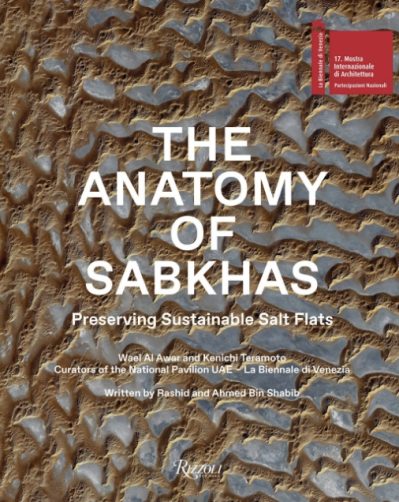
Published for Biennale Architettura 2021 and edited by Wael Al Awar and Kenichi Teramoto, The Anatomy of Sabkhas explored humankind’s historic relationship to sabkhas, and discussed the ways in which builders, architects, and cities have used them as a resource for material and economical gain. A significant part of this research is dedicated to the United Arab Emirates and the broader Gulf region.
The publication attempts to anatomize sabkhas. The term anatomy suggests that sabkhas (or salt flats) are living: Sabkhas, which form part of wetlands, are an essential part of our ecological order. This publication sought to illustrate their importance to both the region and across the globe and that, without sabkhas, our natural environment would be severely disrupted. These complex natural phenomena are essential to plants, animal migration, and carbon sequestration, yet our understanding of them is still in its early stages.
The book presented two major themes: Rural Sabkhas and Urban Sabkhas. The chapter on rural sabkhas explores the ecological foundations of sabkhas, including geology, geography, plants, animals, and arthropods. These rural sabkhas can occur inland— on deserts, lakes, and mountains—and in coastal locations, forming vast seafronts. The second chapter explores urban sabkhas, placing them in an anthropocentric context. The publication includes a supplementary volume by Agha Khan Award-winning Architect Marina Tabassum detailing the journey of the curators’ research for the Wetland exhibition.